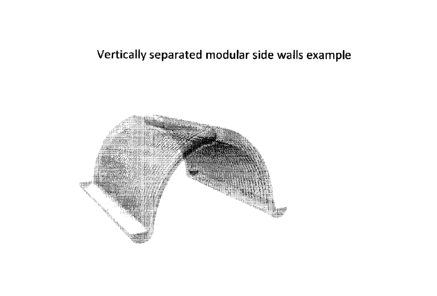Some of the information on this Web page has been provided by external sources. The Government of Canada is not responsible for the accuracy, reliability or currency of the information supplied by external sources. Users wishing to rely upon this information should consult directly with the source of the information. Content provided by external sources is not subject to official languages, privacy and accessibility requirements.
Any discrepancies in the text and image of the Claims and Abstract are due to differing posting times. Text of the Claims and Abstract are posted:
| (12) Patent: | (11) CA 3011582 |
|---|---|
| (54) English Title: | MODULAR HEAT-STORING AND VENTING MINI GREENHOUSE |
| (54) French Title: | MINI-SERRE A AERATION ET STOCKAGE DE CHALEUR MODULAIRES |
| Status: | Deemed expired |
| (51) International Patent Classification (IPC): |
|
|---|---|
| (72) Inventors : |
|
| (73) Owners : |
|
| (71) Applicants : |
|
| (74) Agent: | |
| (74) Associate agent: | |
| (45) Issued: | 2020-01-07 |
| (22) Filed Date: | 2018-07-17 |
| (41) Open to Public Inspection: | 2018-12-27 |
| Examination requested: | 2018-07-17 |
| Availability of licence: | N/A |
| (25) Language of filing: | English |
| Patent Cooperation Treaty (PCT): | No |
|---|
| (30) Application Priority Data: | None |
|---|
A protective plant cover made from translucent or transparent rigid or semi
rigid plastic
material, comprised of double walls fillable with water or another liquid
suitable for heat storage. The
cover involves modular components including side and/or end walls that may be
placed in series.
Contact surfaces between walls may incorporate curvature. The walls may be
supported by a separate
structure. Components may have a curved bottom that collects liquid and may
act as a pivot during
venting. The invention overcomes scale limitations of passive heat storing
plant covers with liquid filled
walls. The invention optimizes heat retention in liquid filled protective
covers and provides flexible
height to width ratios. The invention also allows for passive venting of such
covers via convection.
Benefits are achieved via modular cover sections, including distinctive side
or end walls divided vertically
and including one or more curved contact surfaces.
L'invention concerne une enveloppe protectrice pour végétaux faite d'un matériau plastique rigide ou semi-rigide translucide ou transparent et qui comprend des parois doubles pouvant accueillir de l'eau ou un autre liquide qui convient au stockage thermique. L'enveloppe implique des éléments modulaires, y compris des parois latérales et/ou d'extrémité qui peuvent être disposées en série. Des surfaces de contact entre les parois peuvent comprendre une courbure. Les parois peuvent être soutenues par une structure indépendante. Les éléments peuvent avoir leur partie inférieure courbée qui collecte le liquide et peut servir de pivot pendant l'aération. L'invention résout les limites d'échelle des enveloppes pour végétaux à stockage thermique passif avec ses parois remplies de liquide. L'invention optimise la rétention thermique des enveloppes protectrices remplies de liquide et offre des rapports hauteur-largeur flexibles. L'invention permet également l'aération passive de telles enveloppes grâce à la convection. Les avantages sont obtenus par les sections modulaires de l'enveloppe, y compris des parois latérales ou d'extrémité indépendantes qui sont divisées verticalement et qui comprennent au moins une surface de contact courbée.
Note: Claims are shown in the official language in which they were submitted.
Note: Descriptions are shown in the official language in which they were submitted.

For a clearer understanding of the status of the application/patent presented on this page, the site Disclaimer , as well as the definitions for Patent , Administrative Status , Maintenance Fee and Payment History should be consulted.
| Title | Date |
|---|---|
| Forecasted Issue Date | 2020-01-07 |
| (22) Filed | 2018-07-17 |
| Examination Requested | 2018-07-17 |
| (41) Open to Public Inspection | 2018-12-27 |
| (45) Issued | 2020-01-07 |
| Deemed Expired | 2021-07-19 |
There is no abandonment history.
| Fee Type | Anniversary Year | Due Date | Amount Paid | Paid Date |
|---|---|---|---|---|
| Request for Examination | $400.00 | 2018-07-17 | ||
| Application Fee | $200.00 | 2018-07-17 | ||
| Final Fee | 2020-03-27 | $150.00 | 2019-11-04 | |
| Maintenance Fee - Patent - New Act | 2 | 2020-08-31 | $50.00 | 2020-11-27 |
| Late Fee for failure to pay new-style Patent Maintenance Fee | 2020-11-27 | $150.00 | 2020-11-27 | |
| Back Payment of Fees | 2022-03-07 | $203.59 | 2022-03-07 | |
| Back Payment of Fees | 2022-07-13 | $50.00 | 2022-07-13 |
Note: Records showing the ownership history in alphabetical order.
| Current Owners on Record |
|---|
| CHAPLIN, CHRISTIE M. |
| Past Owners on Record |
|---|
| None |